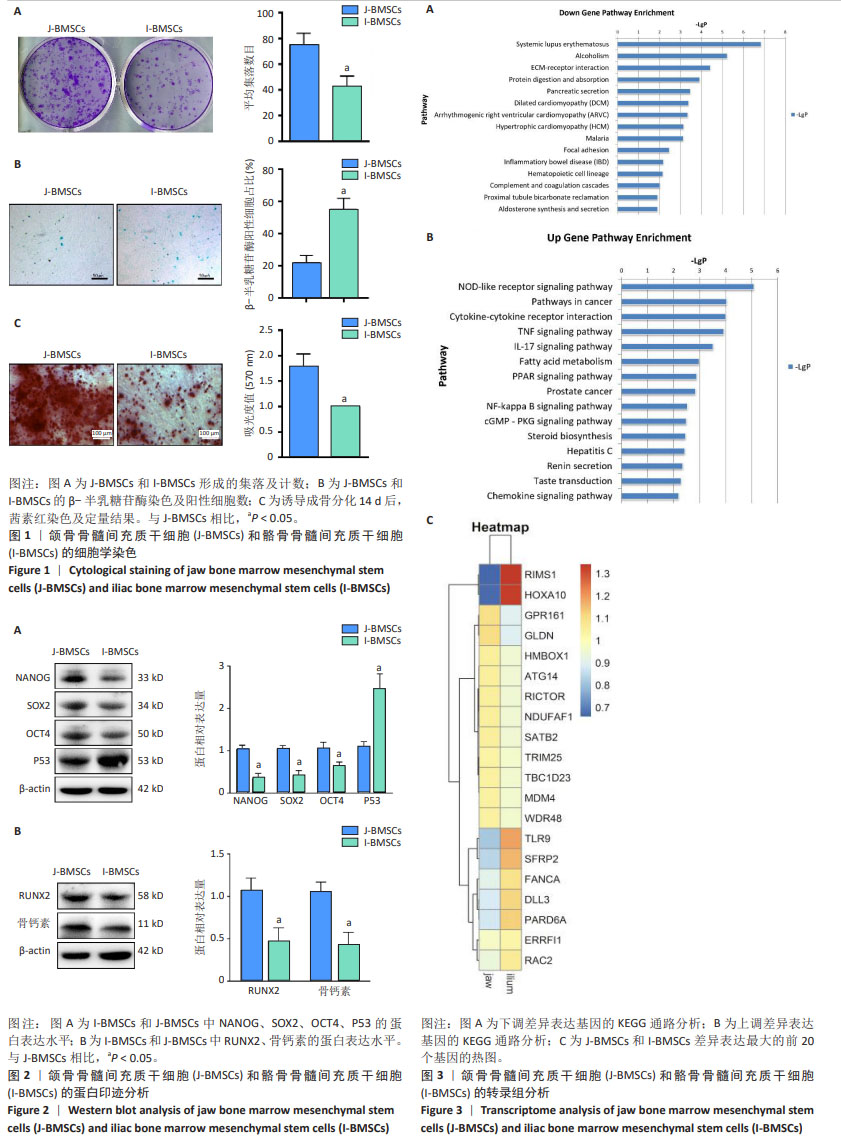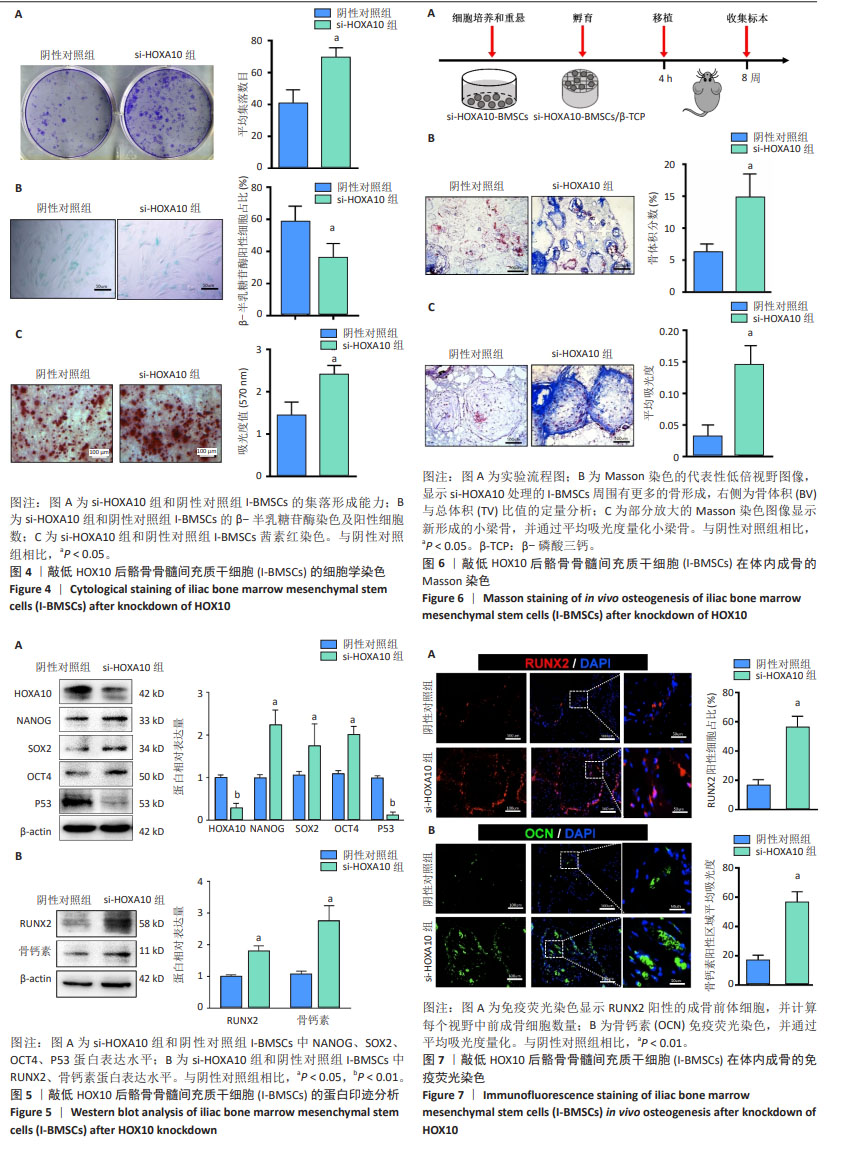[1] SANGKERT S, KAMONMATTAYAKUL S, CHAI WL, et al. Modified porous scaffolds of silk fibroin with mimicked microenvironment based on decellularized pulp/fibronectin for designed performance biomaterials in maxillofacial bone defect. J Biomed Mater Res A. 2017;105(6):1624-1636.
[2] DAS A, SEGAR CE, HUGHLEY BB, et al. The promotion of mandibular defect healing by the targeting of S1P receptors and the recruitment of alternatively activated macrophages. Biomaterials. 2013;34(38):9853-9862.
[3] ZHANG Y, MA W, ZHAN Y, et al. Nucleic acids and analogs for bone regeneration. Bone Res. 2018;6:37.
[4] PALANISAMY N, YANG J, SHEPHERD PDA, et al. The MD Anderson Prostate Cancer Patient-derived Xenograft Series (MDA PCa PDX) Captures the Molecular Landscape of Prostate Cancer and Facilitates Marker-driven Therapy Development. Clin Cancer Res. 2020;26(18):4933-4946.
[5] LIU W, ZHANG L, XUAN K, et al. Alpl prevents bone ageing sensitivity by specifically regulating senescence and differentiation in mesenchymal stem cells. Bone Res. 2018;6:27.
[6] DONG W, GE J, ZHANG P, et al. Phenotypic characterization of craniofacial bone marrow stromal cells: unique properties of enhanced osteogenesis, cell recruitment, autophagy, and apoptosis resistance. Cell Tissue Res. 2014;358(1):165-175.
[7] GROENEVELDT LC, HERPELINCK T, MARÉCHAL M, et al. The Bone-Forming Properties of Periosteum-Derived Cells Differ Between Harvest Sites. Front Cell Dev Biol. 2020;8:554984.
[8] AGHALOO TL, CHAICHANASAKUL T, BEZOUGLAIA O, et al. Osteogenic potential of mandibular vs. long-bone marrow stromal cells. J Dent Res. 2010;89(11):1293-1298.
[9] ZHANG P, MEN J, FU Y, et al. Contribution of SATB2 to the stronger osteogenic potential of bone marrow stromal cells from craniofacial bones. Cell Tissue Res. 2012;350(3):425-437.
[10] HRYCAJ SM, WELLIK DM. Hox genes and evolution. F1000Res. 2016;5:F1000 Faculty Rev-859.
[11] BHATLEKAR S, FIELDS JZ, BOMAN BM. Role of HOX Genes in Stem Cell Differentiation and Cancer. Stem Cells Int. 2018;2018:3569493.
[12] YE L, FAN Z, YU B, et al. Histone Demethylases KDM4B and KDM6B Promote Osteogenic Differentiation of Human MSCs. Cell Stem Cell. 2018;23(6):898-899.
[13] QUINONEZ SC, INNIS JW. Human HOX gene disorders. Mol Genet Metab. 2014;111(1):4-15.
[14] HASSAN MQ, TARE R, LEE SH, et al. HOXA10 controls osteoblastogenesis by directly activating bone regulatory and phenotypic genes. Mol Cell Biol. 2007;27(9):3337-3352.
[15] ZHOU P, WU G, ZHANG P, et al. SATB2-Nanog axis links age-related intrinsic changes of mesenchymal stem cells from craniofacial bone. Aging (Albany NY). 2016;8(9):2006-2011.
[16] BORODINA T, ADJAYE J, SULTAN M. A strand-specific library preparation protocol for RNA sequencing. Methods Enzymol. 2011;500:79-98.
[17] TRAPNELL C, ROBERTS A, GOFF L, et al. Differential gene and transcript expression analysis of RNA-seq experiments with TopHat and Cufflinks. Nat Protoc. 2012;7(3):562-578.
[18] CHO E, PARK J, KIM K, et al. Reelin Alleviates Mesenchymal Stem Cell Senescence and Reduces Pathological α-Synuclein Expression in an In Vitro Model of Parkinson’s Disease. Genes (Basel). 2021;12(7):1066.
[19] MATHEW S, SUNDARARAJ S, MAMIYA H, et al. Regulatory interactions maintaining self-renewal of human embryonic stem cells as revealed through a systems analysis of PI3K/AKT pathway. Bioinformatics. 2014; 30(16):2334-2342.
[20] XIA W, HOU M. Macrophage migration inhibitory factor rescues mesenchymal stem cells from doxorubicin-induced senescence though the PI3K-Akt signaling pathway. Int J Mol Med. 2018;41(2):1127-1137.
[21] SULLIVAN CB, PORTER RM, EVANS CH, et al. TNFα and IL-1β influence the differentiation and migration of murine MSCs independently of the NF-κB pathway. Stem Cell Res Ther. 2014;5(4):104.
[22] LI X, REN G, CAI C, et al. TNF‑α regulates the osteogenic differentiation of bone morphogenetic factor 9 adenovirus‑transduced rat follicle stem cells via Wnt signaling. Mol Med Rep. 2020;22(4):3141-3150.
[23] CHEN SC, BROOKS R, HOUSKEEPER J, et al. Metformin suppresses adipogenesis through both AMP-activated protein kinase (AMPK)-dependent and AMPK-independent mechanisms. Mol Cell Endocrinol. 2017;440:57-68.
[24] LI X, ZHENG Y, HOU L, et al. Exosomes derived from maxillary BMSCs enhanced the osteogenesis in iliac BMSCs. Oral Dis. 2020;26(1):131-144.
[25] WANG F, ZHOU Y, ZHOU J, et al. Comparison of Intraoral Bone Regeneration with Iliac and Alveolar BMSCs. J Dent Res. 2018;97(11):1229-1235.
[26] DONG W, ZHANG P, FU Y, et al. Roles of SATB2 in site-specific stemness, autophagy and senescence of bone marrow mesenchymal stem cells. J Cell Physiol. 2015;230(3):680-690.
[27] LI H, HU P, WANG Z, et al. Mitotic catastrophe and p53-dependent senescence induction in T-cell malignancies exposed to nonlethal dosage of GL-V9. Arch Toxicol. 2020;94(1):305-323.
[28] KRENNING L, FERINGA FM, SHALTIEL IA, et al. Transient activation of p53 in G2 phase is sufficient to induce senescence. Mol Cell. 2014;55(1):59-72.
[29] OURY F, KHRIMIAN L, DENNY CA, et al. Maternal and offspring pools of osteocalcin influence brain development and functions. Cell. 2013;155(1): 228-241.
[30] MATSUMOTO Y, LA ROSE J, KENT OA, et al. Reciprocal stabilization of ABL and TAZ regulates osteoblastogenesis through transcription factor RUNX2. J Clin Invest. 2016;126(12):4482-4496.
[31] LIU SP, WANG GD, DU XJ, et al. Triptolide inhibits the function of TNF-α in osteoblast differentiation by inhibiting the NF-κB signaling pathway. Exp Ther Med. 2017;14(3):2235-2240.
[32] PINTO D, DELABY E, MERICO D, et al. Convergence of genes and cellular pathways dysregulated in autism spectrum disorders. Am J Hum Genet. 2014;94(5):677-694.
[33] DONG S, WALKER MF, CARRIERO NJ, et al. De novo insertions and deletions of predominantly paternal origin are associated with autism spectrum disorder. Cell Rep. 2014;9(1):16-23.
[34] CHOE A, PHUN HQ, TIEU DD, et al. Expression patterns of Hox10 paralogous genes during lumbar spinal cord development. Gene Expr Patterns. 2006; 6(7):730-737.
[35] LIN T, LI XY, ZOU CY, et al. Discontinuous polyostotic fibrous dysplasia with multiple systemic disorders and unique genetic mutations: A case report. World J Clin Cases. 2020;8(23):6197-6205.
[36] VILLAVICENCIO-LORINI P, KUSS P, FRIEDRICH J, et al Homeobox genes d11-d13 and a13 control mouse autopod cortical bone and joint formation. J Clin Invest. 2010;120(6):1994-2004.
[37] WANG C, LI Y, YU K, et al. HOXA10 inhibit the osteogenic differentiation of periodontal ligament stem cells by regulating β-catenin localization and DKK1 expression. Connect Tissue Res. 2021;62(4):393-401.
[38] SUN J, ERMANN J, NIU N, et al. Histone demethylase LSD1 regulates bone mass by controlling WNT7B and BMP2 signaling in osteoblasts. Bone Res. 2018;6:14.
[39] ATASOY-ZEYBEK A, KOSE GT. Gene Therapy Strategies in Bone Tissue Engineering and Current Clinical Applications. Adv Exp Med Biol. 2018; 1119:85-101.
[40] COLLON K, GALLO MC, LIEBERMAN JR. Musculoskeletal tissue engineering: Regional gene therapy for bone repair. Biomaterials. 2021;275:120901.
[41] ZHANG S, ZHANG X, LI Y, et al. Clinical Reference Strategy for the Selection of Treatment Materials for Maxillofacial Bone Transplantation: A Systematic Review and Network Meta-Analysis. Tissue Eng Regen Med. 2022;19(3): 437-450.
[42] YERGES LM, KLEI L, CAULEY JA, et al. High-density association study of 383 candidate genes for volumetric BMD at the femoral neck and lumbar spine among older men. J Bone Miner Res. 2009;24(12):2039-2049. |

